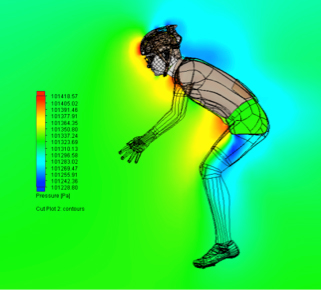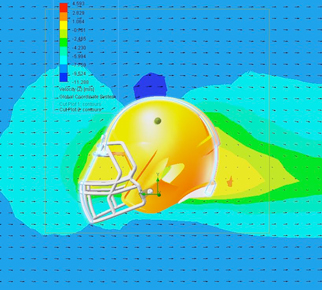Boundary Layer Vortex Induction
The boundary layer is the zone surrounding the aerodynamic surface.
For the athlete, it is his or her helmet, glasses and equipment. The boundary layer is the near-surface zone of air where viscosity contributes the majority of drag. The viscous velocity component of the boundary layer is 99% of the velocity of the free flow. The boundary layer determines the 'effective shape' of the aerodynamic surface. For humans, the boundary layer around the head and shoulders looks nothing like the athlete's actual head and shoulders. Optimization techniques include placing textures, dimples, bumps and air channels in the boundary area. Although, this would appear to negatively impact the athlete's drag, the correct placement of theses tactics can significantly benefit the athlete by creating an optimal airflow over the athlete.
Thus, by changing the shape of the boundary layer, an aerodynamically superior flow [less drag] is induced.
BLVI takes this concept to the next generation. Here, the boundary layer is manipulated to induce a vortex, which swirls and "jets" the air in a favorable direction. Inducing the flow may be a micro drag element, however the vortex has a macro effect by channeling the air around the structure. This dramatically reduces the envelope drag of the boundary layer and athlete. BLVI technology is the core competency of Falcon Pursuit and specific techniques are trade secret and intellectually proprietary.


